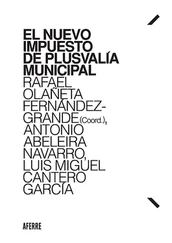Arvède Barine - La Grande Mademoiselle
Здесь есть возможность читать онлайн «Arvède Barine - La Grande Mademoiselle» — ознакомительный отрывок электронной книги совершенно бесплатно, а после прочтения отрывка купить полную версию. В некоторых случаях можно слушать аудио, скачать через торрент в формате fb2 и присутствует краткое содержание. Жанр: foreign_antique, foreign_prose, на английском языке. Описание произведения, (предисловие) а так же отзывы посетителей доступны на портале библиотеки ЛибКат.
- Название:La Grande Mademoiselle
- Автор:
- Жанр:
- Год:неизвестен
- ISBN:нет данных
- Рейтинг книги:5 / 5. Голосов: 1
-
Избранное:Добавить в избранное
- Отзывы:
-
Ваша оценка:
- 100
- 1
- 2
- 3
- 4
- 5
La Grande Mademoiselle: краткое содержание, описание и аннотация
Предлагаем к чтению аннотацию, описание, краткое содержание или предисловие (зависит от того, что написал сам автор книги «La Grande Mademoiselle»). Если вы не нашли необходимую информацию о книге — напишите в комментариях, мы постараемся отыскать её.
La Grande Mademoiselle — читать онлайн ознакомительный отрывок
Ниже представлен текст книги, разбитый по страницам. Система сохранения места последней прочитанной страницы, позволяет с удобством читать онлайн бесплатно книгу «La Grande Mademoiselle», без необходимости каждый раз заново искать на чём Вы остановились. Поставьте закладку, и сможете в любой момент перейти на страницу, на которой закончили чтение.
Интервал:
Закладка:
The Queen was sincerely afflicted by Madame's death. She cherished an open preference for her second son, and the thought of his ambitious flight had agreeably caressed her heart.
Richelieu pronounced a few suitable words of regret for the Princess who had never meddled with politics, and Monsieur did just what he might have been expected to do: he wept boisterously, immediately dried his tears, and plunged into debauchery.
The Court executed the regulation manœuvres, and came to the "about face" demanded by the circumstances. Whatever may have been the calculations made by individuals relative to the positions to be taken in order to secure the best personal results, and whatever the secret opinions may have been (as to the advantages to be drawn from the catastrophe), it was generally conceded that the little Duchess had been fortunate in being left sole possessor of the vast fortune of the late Madame her mother.
The latter had brought as marriage-portion the dominion of Dombes, the principality of Roche-sur-Yon, the duchies of Montpensier, Châtellerault, and Saint-Fargeau, with several other fine tracts of territory bearing the titles of marquisates, counties, viscounties, and baronies, with very important incomes from pensions granted by the King and by several private individuals, – in all amounting to three hundred thousand livres of income. 3 3 Mémoires de Gaston.
The child succeeding to this immense inheritance was the richest heiress in Europe. As her mother had been before her, so Mademoiselle was raised in all the magnificence and luxury befitting her rank and fortune.
They had brought her from the Louvre to the Tuileries by the balustraded terrace along the Seine. 4 4 Mémoires de Mademoiselle de Montpensier.
She was lodged in the Dôme – known to the old Parisians as the pavillon d'Horloge – and in the two wings of the adjoining buildings. At that time the Tuileries had not assumed the aspect of a great barrack. They wore a look of elegance and fantastic grace before they were remodelled and aligned by rule. At its four corners the Dôme bore four pretty little towers; on the side toward the garden was a projecting portico surmounted by a terrace enclosed by a gallery. On this terrace, in time, Mademoiselle and her ladies listened to many a serenade and looked down on many a riot.
The rest of the façade (as far as the pavillon de Flore ) formed a succession of angles, now jutting forward, now receding, in conformations very pleasing to the eye. The opposite wing and the pavillon de Marsan had not been built. Close at hand lay an almost unbroken country. The rear of the palace looked out upon a parterre; beyond the parterre lay a chaos from which the Carrousel was not wholly delivered until the Second Empire. There stood the famous Hôtel de Rambouillet, close to the hotel of Madame de Chevreuse, confidential friend of Anne of Austria and interested enemy of Richelieu. There were other hotels, entangled with churches, with a hospital, a "Court of Miracles," gardens, and wild lands overgrown with weeds and grasses. There were shops and stables; and away at the far end of the settlement stood the Louvre, closing the perspective.
The Court and the city crowded together around the Bird House and the Swans' Pond, in the Dedalus and before the Echo, ogling or criticising one another. At that time the Place de la Concorde was a great, green field, called the Rabbit Warren. In one part of the field stood the King's kennels. 5 5 Sauval (1620-1670), Histoire et recherches sur les antiquités de Paris .
The city's limits separated the Champs-Élysées from the wild lands running down to the Seine at the point where the Pont de la Concorde now stands. This space, enclosed by the boundaries of the city, assured to the Court a park-like retreat in the green fields of the open country. The enclosure was entered by the gate of the Conférence. The celebrated "Garden of Renard" was associated with Mademoiselle's first memories. It had been taken from that part of La Garenne which lay between the gate of the Conférence 6 6 The gate of the "Conférence" was built at the time the great improvements were begun, in 1633. It was built after the grand plans of Cardinal de Richelieu and according to his own instructions (Gamboust).
and the Garden of the Tuileries. Renard had been valet-de-chambre to a noble house. He was witty, pliable, complaisant to the wishes or the fancied needs of his employers, amiable, and of "easy, accommodating manners" 7 7 Piganiol de la Force (1673-1753), Description of the City of Paris , etc.
; in short, he was a precursor of the Scapins and the Mascarelles of Molière. Mazarin found pleasure and profit in talking with him. Renard's garden was a bower of delights. It was the preferred trysting-place of the lordlings of the Court, and the scene of all things gallant in that gallant day.
The fair ladies of the Court frequented the place; so did the crowned queens; and there many an amorous knot was tied, and many a plot laid for the fall of many a minister.
There the men of the day gave dinners, and rolled under the table at dessert; and in the bosky glades of the garden the ladies offered their collations. There were balls, comedies, concerts, and serenades in the groves, and all the gay world met there to hear the news and to discuss it. Renard was the man of the hour, no one could live without him.
The Cours la Reine, created by Marie de Médicis, was outside of Paris. It was a broad path, fifteen hundred and forty common steps long, with a "round square," or rond-point , in its centre. In that sheltered path, the fine world, good and bad, displayed its toilets and its equipages.
Mlle. de Scudéry has given us a description of it at the hour when it was most frequented. Two of her characters entered Paris by the village of Chaillot.
Coming into the city, where Hermogène led Bélésis, one finds beside the beautiful river four great alleys, so broad, so straight, and so shaded by the great trees which form them, that one could not imagine a more agreeable promenade. And this is the place where all the ladies come in the evening in little open chariots, and where all the men follow them on horseback; so that having liberty to approach either one or the other, or all of them, as they go up and down the paths they all promenade and talk together; and this is doubtless very diverting.
Hermogène and Bélésis having penetrated into the Cours,
they saw the great alleys full of little chariots, all painted and gilded; sitting in the chariots were the most beautiful ladies of Suze (Paris), and near the ladies were infinite numbers of gentlemen of quality, admirably well mounted and magnificently dressed, going and coming, saluting as they passed.
In the summer they lingered late in the Cours la Reine, and ended the evening at Renard's. Marie de Médicis and Anne of Austria were rarely absent.
Close by the Champs-Élysées lay a forest, through which the huntsman passed to hunt the wolf in the dense woods of the Bois de Boulogne. In the distance could be seen the village of Chaillot, perched on a height amidst fields and vines. Market gardens covered the quarters of Ville l'Evêque and the Chaussée d'Antin.
Mademoiselle was installed with royal magnificence at the Tuileries. In her own words: "They made my house, and they gave me an equipage much grander than any daughter of France had ever had."
Thirty years later she was still happily surrounded by the retinue provided by her far-seeing guardians. Her servitors were of every grade, from the lowest, who prepared a pathway for her feet, to the highest, whose service added dignity to her presence. By investing her with her nucleus of domestic tributaries, her friends had established her importance, even in her infancy, by manifestations that could not be disputed. In that day people were obliged to attach importance to such details. But a short time had passed since brutal force had been the only recognised right; and it was the way of the world to judge the grandeur of a prince by the length and volume of his train. It was because La Grande Mademoiselle had, from earliest youth, possessed an army of squires, of courtiers, of valets, and of serving-men and serving-women – a horde beginning with the fine milord and ending with the hare-faced scullion, seen now and then in some shadowy retreat of the palace, low-browed, down-trodden, looking out with dazzled eyes upon the world of life and luxury, – it was because she had been a ruler even in her swaddling bands, that she could aspire, naturally and without overweening arrogance, to the hands of the most powerful sovereigns. "The sons of France," says a document of 1649, "are provided with just such officials as surround the King; but they are less numerous… The Princes have officers in accordance with their revenues and in accordance with the rank that they hold in the kingdom." 8 8 Estat de la France (Collection Danjou).
Интервал:
Закладка:
Похожие книги на «La Grande Mademoiselle»
Представляем Вашему вниманию похожие книги на «La Grande Mademoiselle» списком для выбора. Мы отобрали схожую по названию и смыслу литературу в надежде предоставить читателям больше вариантов отыскать новые, интересные, ещё непрочитанные произведения.
Обсуждение, отзывы о книге «La Grande Mademoiselle» и просто собственные мнения читателей. Оставьте ваши комментарии, напишите, что Вы думаете о произведении, его смысле или главных героях. Укажите что конкретно понравилось, а что нет, и почему Вы так считаете.












